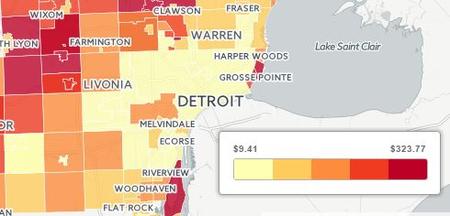Voters To Decide Future Of Region’s Transit System Next Week
Southeast Michigan is missing effective mass transit. Will the voters fund it?


Voters in four southeast Michigan counties will find a proposal for a 1.2-mill, 20-year property tax on the ballot next week. It’s what transit advocates call a historic moment for the region, but opponents say it’s yet another expensive tax for homeowners.
If it passes, the money raised will pay for a series of transit improvements including:
- a local rail line running between Ann Arbor and Detroit;
- a Bus Rapid Transit (BRT) system along Woodward, Michigan, Washtenaw and Gratiot avenues from the suburbs to Detroit;
- bus routes between Metro Airport and the four counties;
- commuter express lines and more buses that cross county boundaries.
Several guests are joining Host Stephen Henderson on Detroit Today to discuss the proposal. Reporter Laura Herberg talked to riders in the region about the current system and what the plan would mean to their lives. She also interviewed opponents to the plan. Her work can be found here.
In addition, WDET’s Sandra Svoboda will discuss the efforts to map the estimated cost per resident in Detroit and the various suburbs, and you can explore the results in the map below. Click on a municipality to see the calculation.
The map comes with a few caveats. First, because home values vary widely between Detroit and between various suburbs, so does the amount being paid per resident. Communities with higher property values and lower populations have a higher per-resident tax payment. Second, if a suburb has a large amount of industrial, agricultural or commercial land, the calculation for the average amount paid per resident will be higher.
But it’s one way to view how the costs are distributed.
Megan Owens, the executive director of Transportation Riders United, recognizes that residents of, for example, northern Oakland and Macomb counties, will be paying for transit services that are concentrated relatively far away from their homes.
“They will have paratransit service for senior that will be connections for how seniors and people with disabilities can connect from those outer communities into the core of the region as well as there will be things like park-and-ride services so you only have to drive part of the way (downtown),” she says. “It’s about giving people choices. We’re not dragging anybody from their car. The idea is to give people options of how they want to get around.”
Map by Melissa Mason. Source: State Tax Commission
